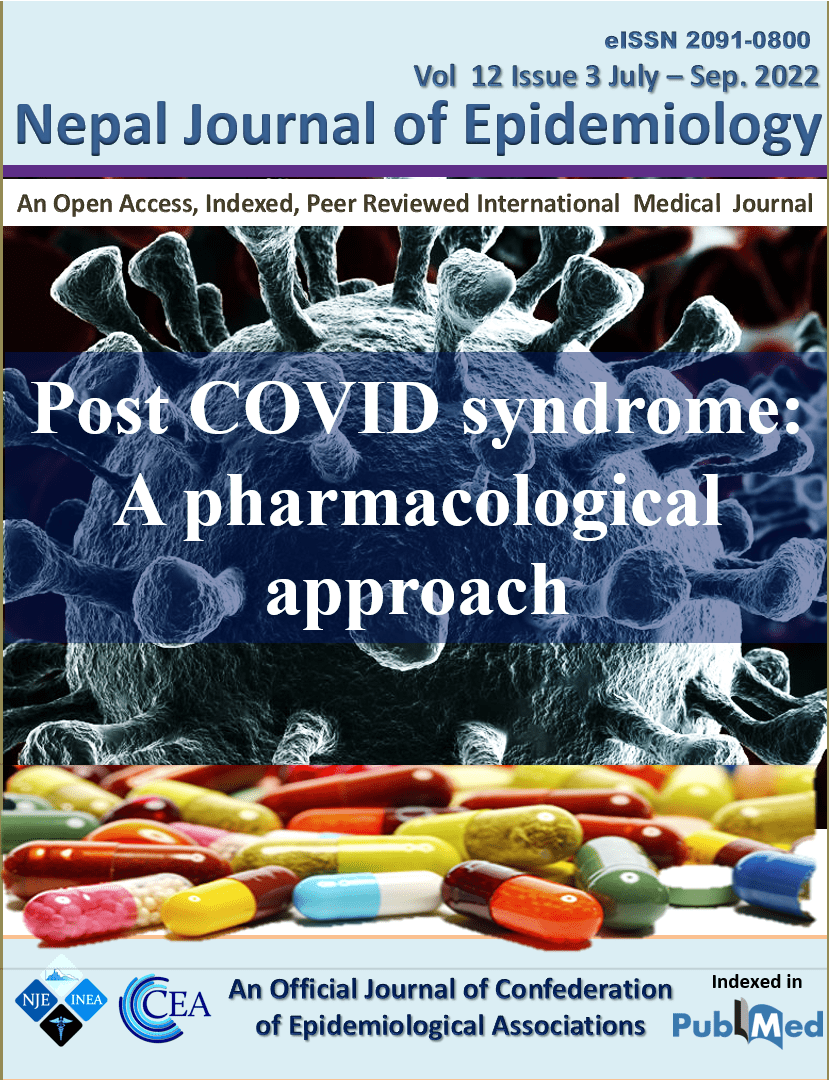Treatment of Long COVID or Post COVID syndrome: A pharmacological approach
DOI:
https://doi.org/10.3126/nje.v12i3.48532Keywords:
Post-acute COVID-19 syndrome, COVID-19 post-intensive care syndrome, COVID-19, Drug Therapy, Clinical TrialAbstract
The novel virus SARS-CoV-2 has plagued our earth for more than a quarter of a decade and is still currently a limiting factor in our daily lives. Of late a new dilemma is beginning to incapacitate a large populous who have been infected by the virus, this condition being termed as post COVID syndrome or Long COVID.Long COVID is becoming more prolific and common amongst those infected with COVID-19 and its development in patients does not delineate between those who have suffered from a symptomatic or an asymptomatic preliminary infection. The effect of this post COVID syndrome can be multisystemic in nature and can affect the daily cognitive abilities of the individual. It is therefore pertinent and of the upmost importance that therapeutic options against Long COVID are explored as the incidence of this condition is rising and will continue to do so in future.
Currently no definitive treatment against Long COVID has been approved and the mainstay treatment is divided into Symptomatic, Supportive and Rehabilitative treatment with self-monitoring. The crux of the current treatment trends for Long COVID is that of a multidisciplinary approach with a great portion of the treatment implicating the patient to take an active role in their recovery, self-monitoring and treatment of the syndrome. Hyperbaric oxygen therapy as well as the use of adaptogens has shown promising results and is advisable to be added to the treatment regimen of patients to aid in decreasing fatigue in patients suffering from post-COVID syndrome. The use of melatonin in patients suffering from insomnia and poor sleep hygiene is also advisable.
Downloads
Downloads
Published
How to Cite
Issue
Section
License
Copyright (c) 2022 CEA & INEA

This work is licensed under a Creative Commons Attribution 4.0 International License.
- Upon acceptance Copyright on any research article is transferred in full to the Confederation of Epidemiological Associations (CEA) and International Nepal Epidemiological Association (INEA). The copyright transfer includes the right to reproduce and distribute the article in any form of reproduction (printing, electronic media or any other form).
- Articles in the Nepal Journal of Epidemiology are Open Access articles published under the Creative Commons CC BY License (https://creativecommons.org/licenses/by/4.0/)
- This license permits use, distribution and reproduction in any medium, provided the original work is properly cited.




